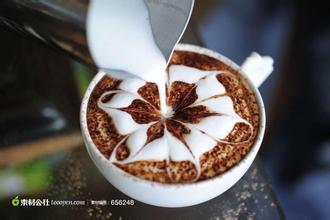Introduction to the flavor and taste characteristics of Mexican Aldumara coffee
The Olmec civilization was born in the tropical jungles of the San Lorenzo Highlands of Central America around 1200 BC. San Lorenzo, the center of the early Olmec civilization, flourished for about 300 years and was destroyed by violence around 900 BC. The center of the Olmec civilization then moved to Raventa near the Gulf of Mexico. The Olmec civilization finally disappeared around 400 BC and was replaced by the Abbey Olmec culture. The exact reason for its disappearance is not known, but it has affected a large number of Central American civilizations. Many features of the Olmec civilization, such as the construction of pyramids and palaces, jade carving, jaguar and serpent worship, were also common elements of later Central American civilizations. Most scholars believe that Olmec civilization is the matrix of Mayan, Sapottek, Tiotihuakan and other civilizations. But there are also people who believe that the relationship between the Olmec civilization and other Central American civilizations is a sisterhood because the Aztecs believe that there must be constant human sacrifice for the universe to continue to work, so many people are sacrificed every year. Most of these people come from prisoners of war. But in time of peace, the Azrac resorted to a formal "courtesy war" and obtained prisoners of war. That is why the Trascaltka were willing to join the Spanish army against the Azrac v after the long dictatorship of Porfirio Diaz, the Mexican revolution finally broke out in 1910. The revolutionary forces defeated the Union army, but infighting broke out, plunging Mexico into civil war for two decades. After the revolution, the Institutional Revolutionary Party of Mexico (Partido Revolucionario Institucional,PRI) came to power and ruled Mexico until the end of the 20th century, when the first party rotation was achieved in 2000.
Mexicans are enthusiastic and optimistic, and the chocolates in Mexican coffee perfectly reflect this. There are different methods of Mexican coffee, but the main difference is whether it contains alcohol or not. let's first introduce the practice of non-alcohol.
Heat a cup of milk, a teaspoon of cinnamon powder and a teaspoon of vanilla powder in a pot. Keep it at medium temperature. The heat is not too high. The milk must not boil. Then add the cocoa powder, fully dissolve and stir well. If you are particularly fond of chocolate, you can use chocolate paste instead of cocoa powder and milk.
Let the milk dry for about 5 minutes, wait until the milk is slightly cool, then pour into the prepared coffee, decorate the coffee surface with cold cream, then decorate with a piece of cinnamon, and the Mexican coffee is ready.
The aromas of chocolate and cinnamon blend together to give off the smell of desert. Tasting such a cup of coffee, you seem to be walking among the gray-green cactus in the Mexican desert. It is a very interesting experience of high-quality beans: Aldu Mara, Mexico.
Taste characteristics: large particles, with a strong sweet, sour taste and good aroma.
The best barbecue degree: medium fried or body fried.
It is characterized by a smooth taste, high acidity, medium mellowness and a slightly nutty finish. Sweet, sour and bitter are neutral and suitable.
The taste is sour, special and elegant. Although the professionalism of Brazilian coffee is of little value, it is very suitable for blending. Because of the huge production of coffee, the price is not very expensive. Mexican coffee is usually selected manually. The main basis for selection is according to the fullness of coffee particles, whether it is uniform, and then grade it. Generally speaking, coffee with full and uniform grains is easier to preserve. Only the fullest and most evenly grained coffee beans can be roasted to represent the best and best coffee in the country.
After the workers picked the coffee beans, they spread the coffee beans in a special house with ventilation on all sides. About a week later, the coffee beans were packed in loosely packed bags so that the wind could blow through the bags. After about seven weeks, the coffee beans changed color and taste. Finally, these coffee beans are selected manually, and the coffee beans of high quality are selected and officially bagged for preservation.
Aldumara coffee beans are the top coffee beans in Mexico. This coffee beans have large granules, strong sweetness, sour taste and good aroma.

Important Notice :
前街咖啡 FrontStreet Coffee has moved to new addredd:
FrontStreet Coffee Address: 315,Donghua East Road,GuangZhou
Tel:020 38364473
- Prev

Introduction to the characteristic boutique coffee in Dominica coffee flavor manor with smooth taste
In the early 17th century, when French, Dutch, and British pirates were operating in the western part of Hispaniola, France began to allow farmers and merchants to gradually colonize the western part of the Spanish island, blocked by the island's mountains. Without attracting the attention of the Spaniards in the east, L'Or é al arrived in Santo Domingo in 1801. He abolished slavery on behalf of the French government. In 1802, Napoleon sent
- Next

Introduction to Panamanian Kasha Coffee Flavor Manor with round fruit juice taste
Panama is located on the Panamanian isthmus in Central America, bounded by Colombia to the east, the Pacific Ocean to the south, Costa Rica to the west and the Caribbean Sea to the north. The territory is S-shaped to connect North and South America, and the Panama Canal connects the Atlantic and Pacific oceans from north to south. It is known as the bridge of the world. [5] Panama has a land area of 75517 square kilometers, a land length of 772km and a width of 60 to 1.
Related
- Detailed explanation of Jadeite planting Land in Panamanian Jadeite Manor introduction to the grading system of Jadeite competitive bidding, Red bid, Green bid and Rose Summer
- Story of Coffee planting in Brenka region of Costa Rica Stonehenge Manor anaerobic heavy honey treatment of flavor mouth
- What's on the barrel of Blue Mountain Coffee beans?
- Can American coffee also pull flowers? How to use hot American style to pull out a good-looking pattern?
- Can you make a cold extract with coffee beans? What is the right proportion for cold-extracted coffee formula?
- Indonesian PWN Gold Mandrine Coffee Origin Features Flavor How to Chong? Mandolin coffee is American.
- A brief introduction to the flavor characteristics of Brazilian yellow bourbon coffee beans
- What is the effect of different water quality on the flavor of cold-extracted coffee? What kind of water is best for brewing coffee?
- Why do you think of Rose Summer whenever you mention Panamanian coffee?
- Introduction to the characteristics of authentic blue mountain coffee bean producing areas? What is the CIB Coffee Authority in Jamaica?

